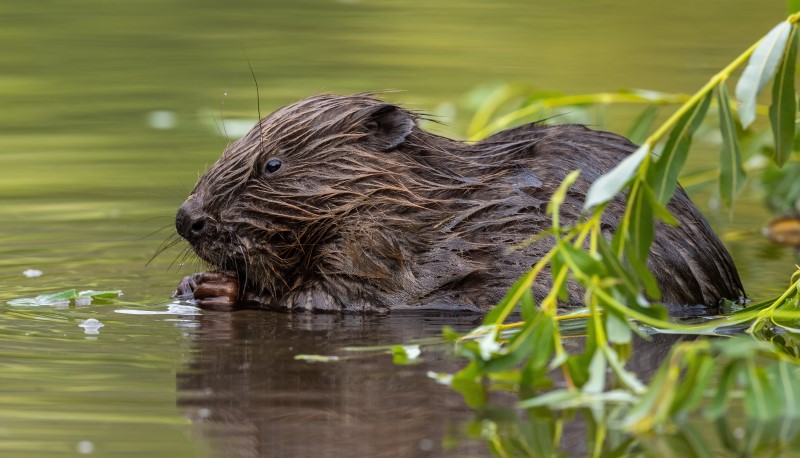Re-wilding Beavers
History of beavers in Scotland
The Eurasian Beaver (Castor fiber) is a large semi-aquatic rodent that has been reintroduced to Scotland after being hunted to extinction here in the 16th century. Fossil and archaeological evidence suggests that they were previously widespread throughout mainland Scotland. Reintroductions have also taken place in many other European countries and the species has now recovered much of its original range following near total extinction at the start of the 20th century.

| Timeline | |
|---|---|
| 1994 | Adoption of Habitats Directive in 1994, required consideration of reintroduction of lost species |
| 2001 - 2006 | Beavers were confirmed to be present in the Tay catchment from an unofficial reintroduction |
| 2009 | Reintroduction of beavers in the Knapdale area of Argyll in 2009 |
| 2012 | A small population resulting from escapes present in the Beauly catchment near Inverness |
| 2016 | Scottish government decided to allow beavers to remain and spread naturally |
| 2019 | Beavers were granted European Protected Species status in Scotland |
| 2012 | The policy changed to allow translocations of beavers to new catchments |
| 2022 | Beavers translocated to Doune, Perthshire |
| 2022 | Scotland's Beaver Strategy 2022-2045 released |
| 2023 | Beavers translocated to Loch Lomond Trossachs National Park |
| 2023 | Beavers are well established in Scotland now, with an estimated population of 1500 animals in the Tay and Forth catchments, smaller numbers in Argyll and near Inverness and with plans to translocate animals from problem areas in the Tay to new catchments, such as the Spey in the coming years. |
Beaver ecology
Beavers live in family groups comprising an adult pair and their young under two years of age. They can give birth to up to six kits per year, but 2-3 is more typical, and usually live for 7-8 years. Family groups defend strict territories which typically contain 1.5 - 4 km of water’s edge. Beavers are strict herbivores and eat a wide variety of plants including trees. Most feeding takes places at or within 20 metres of the water’s edge but occasionally up to 50 metres from water.
Beavers can live in burrows in riverbanks (often with underwater entrances) or in lodges made from branches and mud within the water. The dams for which beavers are so well known are built to raise the water level upstream to provide more feeding habitat and safe refuges including sites for lodges. Beavers will also dig canals to allow movement between wetland areas and can create well-marked trails to areas where they feed inland.
As Scotland’s beaver population continues to expand, appropriate management and mitigation will be required and these will be guided by Scotland’s Beaver Strategy. It is important to find ways of accommodating beavers and mitigating any negative impacts that they might have on land management. The strategy outlines a beaver management process that land managers should follow:
- Accommodate
- Mitigate
- Translocate
- Control
More information on the options can be found below including video case studies of farmers who are engaging in the management process.
FAS Resources
An Introduction to Beavers
Accomodating Beaver Impacts on a Farm
Mitigating Beavers' Impacts on a Farm
Living Alongside Beavers
Nature Scot: Under the Beaver Management Framework, NatureScot have a Scottish Beaver mitigation scheme to provide advice and assistance to achieve this. Find out more.
Beaver Trust: Learn more about the process of restoring beavers to the landscape and the current projects across the UK.
Sign up to the FAS newsletter
Receive updates on news, events and publications from Scotland’s Farm Advisory Service
